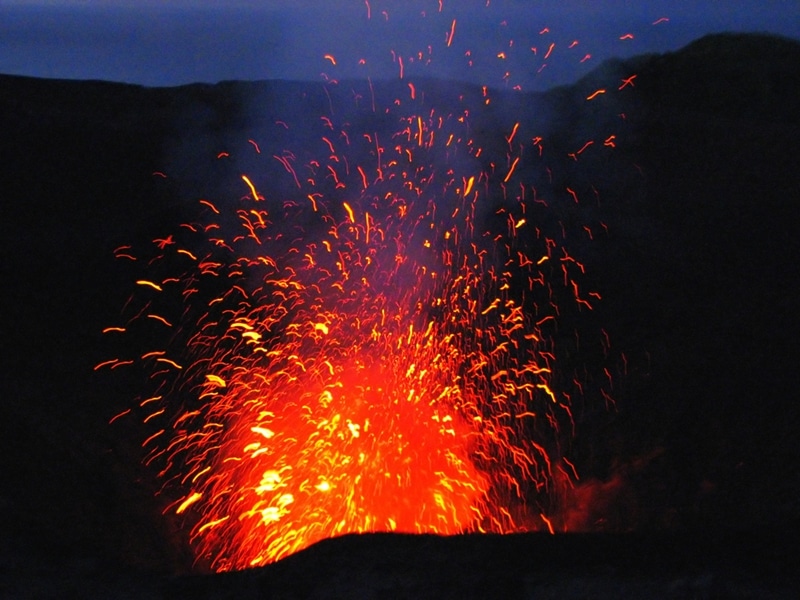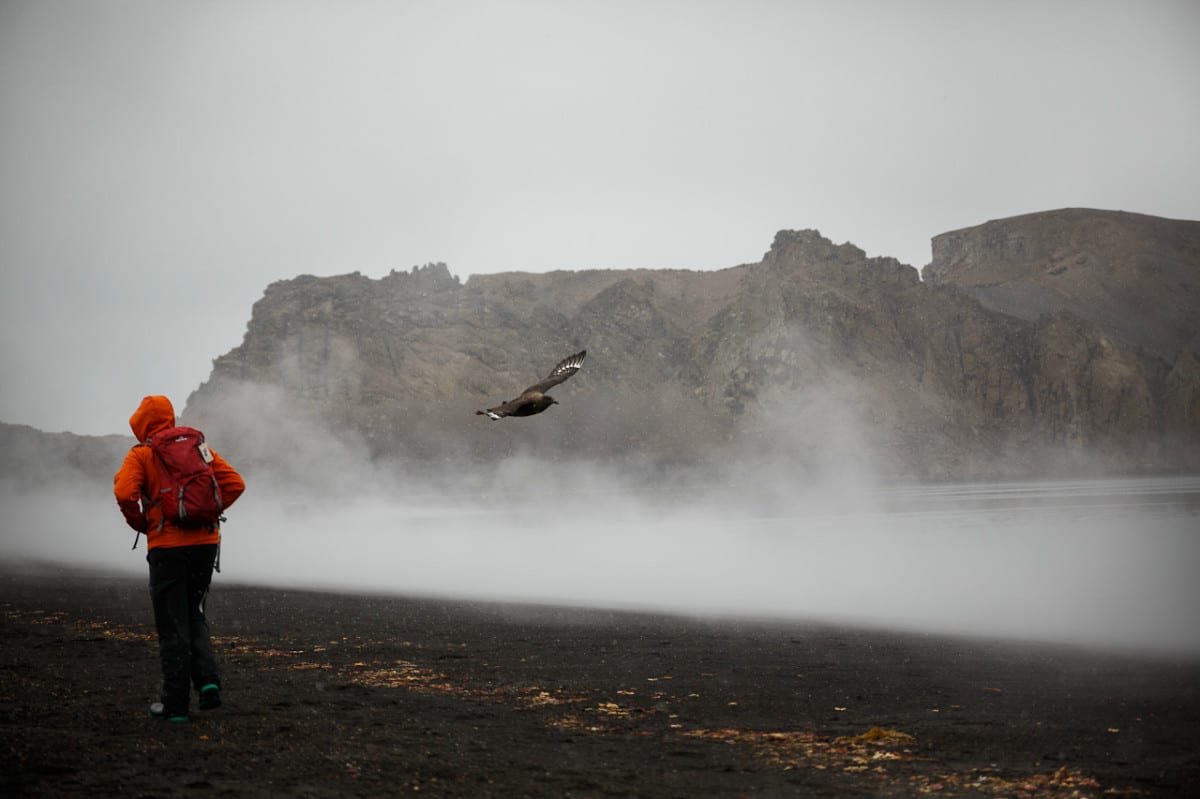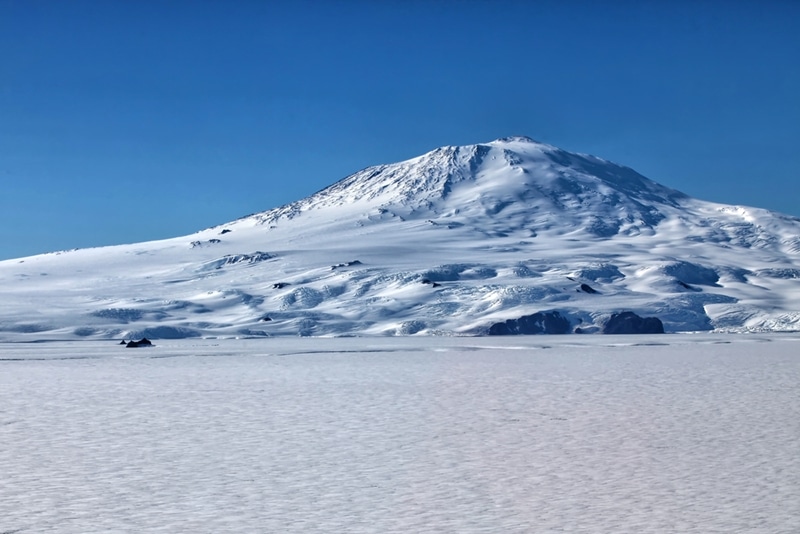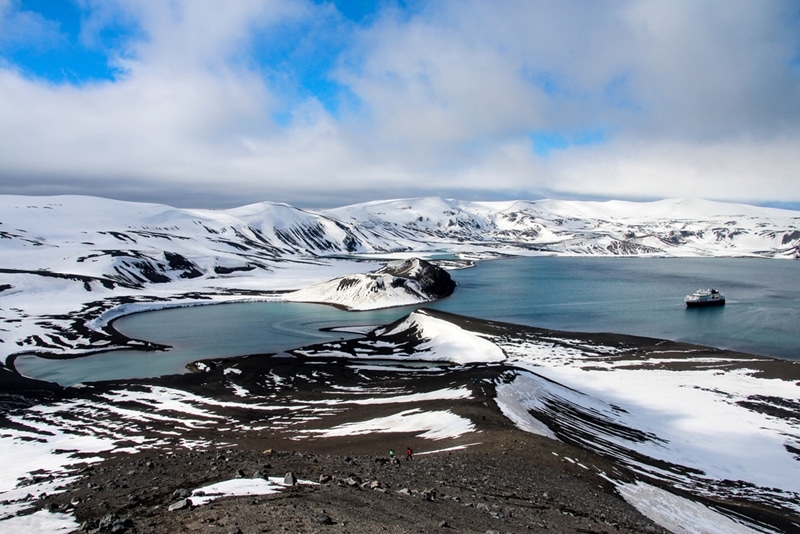Look beyond the ice. Take a deep dive into the geology and geography of Antarctica, and you’ll discover the continent is red-hot with volcanic activity.
In fact, scientists are still learning more about Antarctica’s volcanic field with a recent paper published by Edinburgh University highlighting some exciting updates. For anyone with an interest in how Antarctica was formed and continues to change, it’s important to understand the role of volcanoes and the ongoing volcanic activity.
New volcanoes hidden under the ice
Using radar mapping data of Antarctica, a research team from Edinburgh University was recently able to confirm the presence of 91 volcanoes under up to 4km of ice sheets in West Antarctica. Before this announcement, the world already knew about 47 in this part of the continent, making this update significant for Antarctic science moving forward.

Read more: Top myths about travelling to Antarctica
This discovery means Antarctica is home to the largest volcano range on earth, greater than east Africa and the Himalayas. Scientists also believe there are more volcanoes to be found in Antarctica, meaning there are more secrets to uncover.
Edinburgh University compared satellite and database records, as well as measurements from ice-penetrating radar and geological information to find the hidden peaks of basalt rock. Ranging in height from 100m to 3,850m, the volcanoes aren’t known to be active, but could become active if Antarctica’s ice continues to thin with climate change.
Dr Robert Bingham from the university’s School of GeoSciences explained that there is still much to learn about the icy continent.
“It is fascinating to uncover an extensive range of volcanoes in this relatively unexplored continent.”
“It is fascinating to uncover an extensive range of volcanoes in this relatively unexplored continent. Better understanding of volcanic activity could shed light on their impact on Antarctica’s ice in the past, present and future, and on other rift systems around the world,” he said.
“If they [the ice sheets] are reduced significantly, this could release pressure on the volcanoes that lie below and lead to eruptions that could further destabilise the ice sheets and enhance sea level rises that are already affecting our oceans.”

Read more: Exploring the sub-Antarctic islands
What we already know about volcanoes in Antarctica
One of the benefits of going on a voyage with Aurora Expeditions is engaging with our on-board expert team. Whether you’re keen to discover more about the history of Antarctica or a particular species of bird, our historians and naturalists are happy to answer your questions. This also includes volcanic activity.
At the moment, there are only two active volcanoes in Antarctica – Mount Erebus (due south of New Zealand) and Deception Island (south east of Cape Horn, South America). Both these volcanoes are very unique and showcase the why Antarctic volcanoes are different to those found around the world.
Mount Erebus
Only behind the dormant Mount Sidley in size, Mount Erebus (3,794 m) is Antarctica’s most active volcano. In fact, the Ross Island peak holds the record as the southernmost active volcano on the planet.

Read more: Antarctica’s amazing ascents
The Stratovolcano last erupted in 2015 with rock samples dating back 1.3 million years. Interestingly, Mount Erebus is one of the few volcanoes that has a persistent convecting phonolitic lava lake – molten lava constantly contained in the crater.
Although Aurora Expeditions doesn’t venture to this side of Antarctica, it remains one of the most poignant locations on the continent due to the events of November 28, 1979. Due to a flight path co-ordinate error, Air New Zealand flight 901 crashed into Mt Erebus, killing all 257 on board. Sightseeing flight represented a major breakthrough in Antarctic tourism and this tragedy hit the New Zealand community hard – still the country’s deadliest peacetime disaster.
Deception Island

Read more: Tips for surviving the Drake Passage
On the other side of Antarctica Peninsula sits Deception Island, an active volcano in the South Shetland Islands archipelago. Deception Island is a completely different type of volcano to Mount Erebus in the fact that it sits underwater with the island being the caldera. The highest point of the island is also only 576m – making it accessible for our voyages.
On some Antarctic cruises, we may land on Deception Island and allow you to explore the various sites of geological and historic value. This includes whaling stations dating back to the early 20th century and the geothermal waters at Whalers Bay.
What might surprise you is that Deception Island is one of the safest harbours in Antarctica, thanks to the caldera which protects the waters from strong winds. Of course, since the volcano is still active, we can never be too careful around Deception Island!
With the discovery of 91 new volcanoes and many more potentially to be found, Antarctica is a hot bed of volcanic activity – helping to shape the landscape of this fascinating place. If you want to see Antarctica for yourself, feel free to get in touch with the team at Aurora Expeditions today – we look forward to hearing from you!

